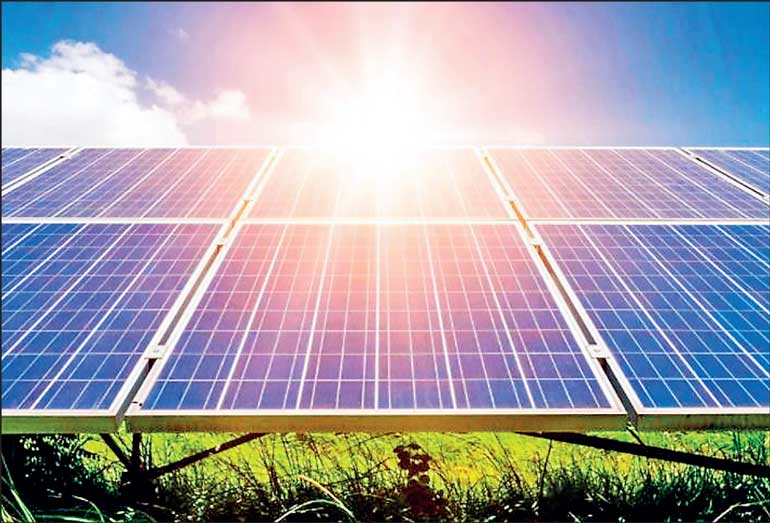Monday Dec 22, 2025
Monday Dec 22, 2025
Thursday, 31 March 2022 01:08 - - {{hitsCtrl.values.hits}}

 The current power crisis is the ‘talk of the town’. And quite legitimately so, as it affects all walks of our economic, financial, and social life across all segments of society, threatening the very basic of our needs. With a 10-hour power cut imposed daily currently at the time of writing, entire business and personal lives are now in complete disarray with this ‘mother of all crises’.
The current power crisis is the ‘talk of the town’. And quite legitimately so, as it affects all walks of our economic, financial, and social life across all segments of society, threatening the very basic of our needs. With a 10-hour power cut imposed daily currently at the time of writing, entire business and personal lives are now in complete disarray with this ‘mother of all crises’.
There many opinions, often confusing, circulating about the power crisis, made by an array of people who profess to have all the solutions.
Sri Lanka is not short of experts in every possible field. From economics to power, energy and tourism to environment, you name it, they are a dime a dozen, sprouting up all over. It is very clearly seen that the Government gives ear to such ‘experts’, thereby lending credibility to these views, leaving the voices of the knowledgeable professionals ‘out in the wilderness’, unheard. (Remember the infamous COVID-curing concoction!) Of course, the fact that some professionals are acting unethically, compromising their standing, by resorting to corruption and blindly following politicians, does not help the cause.
The current power crisis is a case in point. The common ‘rallying call’ has been renewable energy, (solar power in particular) as the cure for all ills of the current power crisis. No doubt some of these calls have been from genuine persons sincerely concerned about the environment. But ‘making a lot of noise’ without understanding the real background to the problem, is detrimental.
So, presuming that some basic clarification would be useful to many, on this very topical subject, I am delving into this issue to try and unravel the complexities of solar power in layman’s terms. (Usually, my opinions are centred around tourism, wildlife and environment, which I do know something about. So, some may think power systems is a new subject to me and add me also to the category of ‘experts’ mentioned earlier. May I hasten to clarify that this opinion on electrical power is penned after ‘oiling the rusty cog wheels’ of my early electrical engineering education)
Solar power is clean
Solar energy is very ‘clean’ energy, there is no doubt about that. It is theoretically ‘free’ from the sun, and is a perennial source of energy. On average, the earth receives about 173,000 terawatt hours (TWh) in one hour from the sun, while humans the world over consumed in 24 hours 160,000 TWh (Enerdata 2018). So theoretically the sun produces all the energy we need for a day, in just one hour. But harnessing it for proper use has challenges.
Solar power generates differently
Soar power is Direct Current (DC). Usual home appliances operate on Alternate Current (AC). Therefore, solar power systems need specialised hi-tech equipment (inverters) to convert DC to AC. One can of course rewire lights to work on DC but other electrical appliances such as refrigerators and washing machines need AC power.
Hence due to the need for such specialised hi-tech equipment, solar power installations are expensive.
However internationally costs are coming down. But in the current Sri Lankan context it may be prohibitively costly now with the prevailing exchange rates. (I recently called a solar installation expert and asked about upgrading my existing solar system to a battery storage set up. His answer was ‘Don’t even think of it, just buy an ordinary generator’)
Solar power is not consistent
Solar power is relatively unreliable as a constant source (‘dispatchabilty’) since any cloud cover causes drop in the output. Installations have to be in open air, free from any obstructions that can cause shade. The newer solar panels have higher in-built technology so that during overcast days the solar panels will still deliver some output but it will still be at much lower output.
Solar energy has to be stored
Solar power is abundantly available only during daytime. Hence the energy has to be stored in battery banks. Such battery banks are quite expensive and need good maintenance which all adds to cost of installation. The cost of battery banks is currently reducing.
Solar panels need large area
Solar panels need proper orientation to the sun, and need large open areas for installation. As a rule of thumb, you require 10 sq. metre area for a 1 kW solar system capacity. An average small house would need about 2.5 KW which means the area needed would be about 25 sq. metre or 270 sq. feet (about 1/3 the size of a badminton court).
Net metering offered by CEB
The net metering scheme offered by CEB effectively provides an external ‘storage’ for consumers. The CEB effectively ‘buys’ the excess power from the consumers, and reduces the amount from the bills.
It does not really help the CEB as they really do not want the excess power produced by consumers during the day time. CEB only needs extra power during the night time peak (under normal circumstances that is). But in the current context it may help conserve some hydro and thermal generation during the day time.
In addition, the fluctuations in the output due to the unreliability of the dispatch, causes difficulty for CEB to maintain the overall grid power system equilibrium.
Special methods and equipment are needed to counteract this. (It is due to these technical reasons that the CEB is reluctant to promote more net metering systems)
Conclusion
There is no doubt that renewable energy and especially solar, is the way forward for a tropical country like Sri Lanka.
But a country cannot rely totally on renewables due to its intermittent nature.
However, as explained above, solar installations do have many challenges specially in interconnecting to the national grids.
Simply setting isolated targets for renewable energy is not sufficient.
A series of peripheral augmentations to the grid has to be undertaken simultaneously for large scale alternate energy installations to be integrated (energy source portfolio mix management).
Domestic solar installations may become very cost-prohibitive with the current FX currency crisis, and may make ROIs not viable anymore
Of course, if there is a tariff revision on electricity rates, then once again the equations may become viable.